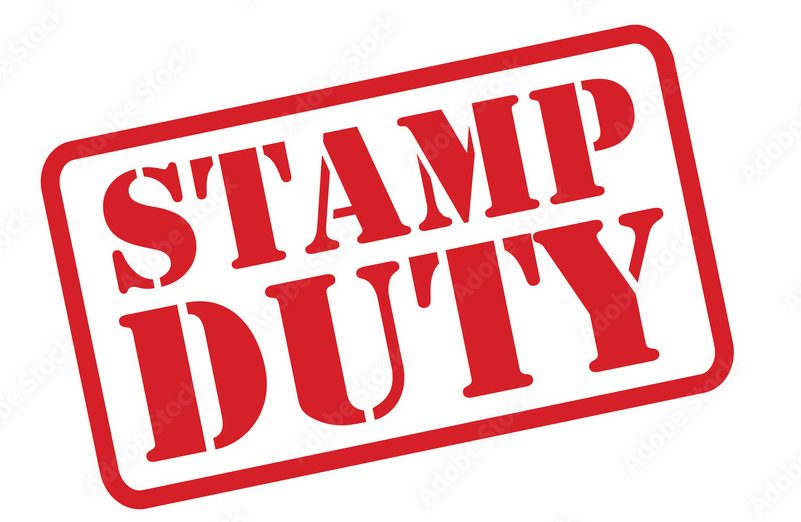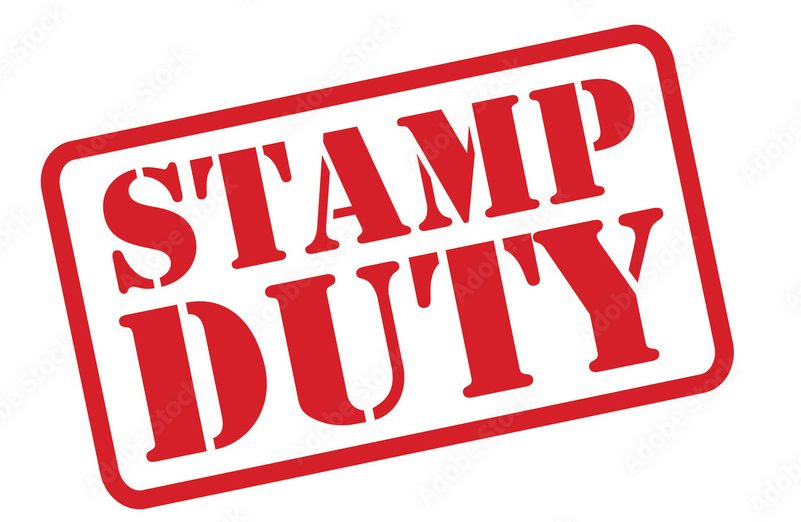Modern Day Relevancy Of Stamp Papers As Per Indian Stamp Act, 1899
In India Stamp papers and levy of stamp duty are governed as per the Indian StampAct, 1899. Whereas, the Stamp Duty can be termed as the statutory levy for the execution of instruments and the exchange of documents or transaction papers, paid on certain instruments on a fixed or ad valorem basis. Herein, the term Ad valorem means “according to value” and if the stamp duty is levied on an ad valorem basis, the amount fluctuates depending on the value of the items, services, or property.
The Indian Stamp Act of 1899 defines Stamp Duty as a documentary impost and not a transaction tax, based on the assessed value of a subject (like property) that is due on the amount of the Instrument used for Judicial and Non-Judicial Transactions. Stamp paper is an Official Instrument issued by the government with currency note imprints that have monetary variable values to levy Stamp Duty on Judicial and Non-Judicial transactions, e.g- they range from Rs. 10 to Rs. 25000 and different denominations are used for different purposes. The various denominations of Stamp papers are:-
- 10
- 20
- 50
- 100
- 500
- 1000
- 5000
- 10,000
- 15,000
- 20,000
- 25,000
The parties involved in the transaction process have the necessary agreements that are going to provide a seamless flow of action to execute the transaction and the Stamp Paper acts as a Legal arrangement that will bind and ensure that the value doesn’t diminishearly in this transaction. It should be paid before the execution of the document or within 3 months of the performed document being presented where the terms need to be accomplished.
The said Act also determines the issues like, inadequate stamping, remedy and penalty to deficitly stamped documents, and the their legal repercussions in entire. According to the provisions laid down in Chapter 4 of the act, the inadequately stamped documents are not admissible as evidence in any of the court and a penalty will be laid upon for the document to be admissible.
ESSENTIAL ELEMENTS OF STAMPING AN INSTRUMENT
- Details of the parties to the transaction.
- It has to be kept in mind that an instrument cannot attract stamp duty if the value of the instrument is lower than the prescribed value of instrument that can be stamped under the relevant statute/legislation.
- If the stamp duty is underpaid or if the instrument is unstamped, a statutory penalty shall be attracted, ranging from twice the deficient stamp duty to 10x the deficiency.
- Intentional evasion of stamp duty may also attract imprisonment if proved.
- An appropriate and proper stamp duty attaches an evidentiary value to the instrument in the court of law.
REVENUE FROM STAMP PAPERS:-
The Stamp duty collected from these transactions is based on the taxability of the instrument rather than the transactions, which are variable and specified under Schedule 1 of the Act. In India, the federal system allows the obligation of specifying the amount to be charged as stamp duty to be shared between the Centre and the States, while the obligation to collect and keep the tax is assigned to the States where the instrument is going to be executed. They are used in all commercial transactions that include delivery or transfer of any moveable or immovable property, however, they should not be considered as a negotiable instrument. Transactions that generally have legal implications, including but not limited to, Lease Agreements, Affidavits, Indemnity Bonds, Financial deals, which are executed through these Stamp Papers so that they can be legally enforceable since satisfactory stamping as per the relevant state legislature of these documents saves time and acts as a precaution if any legal issue arises involving the transactions.
The Stamp Papers are generally classified into 2 types –
- Judicial Stamp Papers –Judicial Stamp Papers are often used for legal matters like court proceedings and court fees to avoid immediate payment transactions with the Court of Law. These are important to adjudicate a suit or any other legal proceeding before the court of law after due payment as prescribed by law.
- Non-Judicial Stamp Papers –Commercial transactions like Rent Agreements, Sale of Real Estate, Mortgage, etc,and transactions concerning taxes use Non-Judicial Stamp Paper to add a legal element to the document.
When a person files a civil suit, they must now pay court fees that are commensurate to the amount of the claim.The staff members cannot be trusted with money worth up to Rs. 3 lakhs. To prevent this monetary transaction, Judicial Stamp Papers with the case number, names of the parties, and signatures of the attornies are created and appended to the conclusion of the plaint.
The court charge varies depending on the nature of litigation; Section 7 of the Court Fee Act of 1870 allows for the computation of fees in various issues.
The differences are as follows:
- For money – In financial claims (particularly actions for losses or reimbursement, or arrears of maintenance, annuities, or other sums due regularly), it is as per amount sought;
- For support and other procedures– In cases for sustenance or other payments that are payable regularly, it is based on the worth of the subject matter of the suit, where such value is anticipated to be about 10x times the amount claimed to be payable for the succeeding year;
- For any other movable property with a monetary worth– In actions for movable property other than money, if the subject matter has a market value — according to a certain value at the time the plaint is presented
Therefore, preparations and entries regarding the administration of justice are carried out on Judicial Stamp Papers, and duty in the form of court fees. A magistrate will not use non-judicial stamped paper for judicial processes, such as drafting orders and decisions, and will not accept pleas written on such documents.
Types of Non-Judicial Stamp papers are as follows:
- Stamp Paper–The circulation of Stamp Papers is spiraling downwards as today we are equipped with better a tool, which is the E-Stamp Paper. E-Stamp Papers are widely used to seal Leave and License Agreements. For these Agreements, one can always get the document printed on a normal paper but pay the Stamp Duty at the respective portal.
- Traditional Stamp Paper–Traditional Stamp Papers were once widely circulated across Maharashtra to register Rental Agreements and the kind. They are now vastly replaced by E-Stamp Papers. Due to the rampant circulation of fake Stamps, these Stamp Papers may shortly be phased out of publication.
- Impressed Stamp/Special Adhesive Stamp (Label)–Impressed Stamp and Impression by Franking Machineshave labels affixed on them by the appropriate officer.
- Revenue Stamps–Revenue Stamps are used by the general public for monetary transactions like receipt of payment of money.
- Court Fee stamps–Court Fee Stamps are generally used by the public and other departments for correspondence with government departments/offices, the Registration office, Police station, Revenue offices, etc.
- E Stamps-E-stamping is the process of paying stamp duty online and receiving a one-of-a-kind e-stamp certificate as proof of payment.Stock Holding Corporation of India Limited (“SHCIL”), which provides a platform for online stamp duty payment, is responsible for the e-stamping service.
It is a simple and rapid method that produces non-judicial e-stamp paper within minutes. E-stamped documents may be verified instantly, and instruments can be stamped safely and remotely.
- Franking– The procedure of actually getting the documents stamped is known as franking.This procedure entails having the documents marked or stamped, indicating that they are lawful and that any stamp duty owed has been paid. In order to get your instruments franked, the documents have to be taken to an authorised bank or a franking center. After payment of stamp duty, an automated franking machine will mark the document using a red mark or any particular denomination(before the parties to the instrument have signed it). This franked document will now act as a proof that stamp duty has been paid.
- Electronic Secure Bank & Treasury Receipt (e-SBTR) – is a service that allows you to pay your stamp duty online.eSBTR is printed on secure stationery paper provided by the Indian Security Press. It has a watermark, a backdrop tint, a perforated document logo, micro security threads, and other security elements integrated in.Duplication, tampering, and fraud are all prevented through e-SBTR.
Stamp duties are variable across States and are governed by the terms of the guidelines legislated by the states due to India’s federal structure. The provisions concerning Stamp duties and Stamp paper are prescribed by the State Legislations enacted for this particular purpose (for instance,the Maharashtra Stamp Act, 1958) and in the absence of a particular state’s legislation, the Indian Stamp Act is accordingly applied.
The recent amendments in the Indian Stamp Act concerning Securities Market Transactions have been implemented to assist them in doing business and to bring standardization to the stamp duty applicable on the issue and transfer of securities. It has modernized the process of Stamp Duties levied upon instruments used for the transfer of securities by all the states through Stock Exchanges, which will result in revenue efficiency and further develop the equity culture.
INTRODUCTIONOF E-STAMP PAPER:-
In 2019, the Indian Stamp Act, 1899 was amended for prevention of tax evasion. Although the amendment came to force a little later than planned due to Covid-19. In recent times, the usage of E-Stamp paper has grown exponentially due to its smooth and fair transactions and has been successful enough to curb unseed scams. It is the most secure way of electronically paying the government for Non-Judicial Stamp duty and making the document legally enforceable from the comfort of your home. The facility is available in the NCT of Delhi, Karnataka, Himachal Pradesh, UT of Ladakh, Chandigarh, Jammu and Kashmir, Puducherry and Andaman & Nicobar.The encouragement to expand the usage of E-Stamp has gone to such an extent that Gujarat has banned the use of physical stamp paper since 2019 to advance the notion of ‘Digital India’. The facilities for e-stamping are accessible at all Scheduled banks and financial institutions under the control of State and Central Government, post offices, CAs, etc and the process is also quite simple and hassle-free.
PROCESS TO ACQUIRE E- STAMP PAPER
The Stock Holding Corporation of India Limited (SHCIL) is the designated organisation by the Government of India as the Central Record Keeping Agency (CRA) for all e-stamps used. Currently, SCHIL is responsible for everything, ranging from user registration to administration. SHCIL has also designated authorized collection centres, or Authorized Collection Centres (ACCs) that will issue certificates to users.
The process is simple. Visit the SHCIL website, i.e. www.shcilstamp.com, then check if the state government allows e-stamping on the designated transaction. In case the designated state allows the e-stamping, fill up and submit an application form at the nearest ACC (details available on the site itself) with the details of the parties and the proposed transaction. The stamp certificate can only be processed only after payment of the cost of the value on any proposed mode, which may be Cash, Demand Draft, Cheque (Subject to realisation) and Online payment through debit card, credit card, pay order, among multiple other options.
BENEFITS OF E-STAMPING:
There are many benefits to this process, some of which are:
- E-Stamp Certificate can be generated within minutes.
- E-Stamp Certificate generated is tamper proof.
- Authenticity of this certificate can be checked through the inquiry module.
- An e-Stamp Certificate has a Unique Identification Number (UIN) that can be verified during the registration of documents by the sub-registrar.
- E-Stamps reduce the risk of being scammed by Stamp vendors.
- Lastly, as opposed to physical Stamp paper, an e-Stamp Certificate does not require a specific denomination.
DISADVANTAGES OF E-STAMP PAPERS:-
The foremost is the the non-issuance of a fresh e-certificate in lost or stolen cases. Once payment is made online, collection is from the allotted Stamp Vendor only. Secondly, uneditable characterstics of e-stamp paper once printed, and evasively the third is the penalty clause with adequate explanation for non-payment at the time of generation of e-certificate.
IMPORTANCE OF E-STAMP PAPERS:-
Being the vital source of revenue for the Government, usage of stamps fee is made mandatory for carrying out official activities by the users and by that mean the state is legally collecting taxes and revenue. The online or hybrid mode of work culture during the post-pandemic era in India considerably needs the e-stamping of documents and online miscellaneous legal procedures. Especially the rural areas are needed to vastly promote the E-Stamping culture to encourages transparency and reduces exploitation by dishonest vendors.
However, the dilemma of completely converting the process to digital stamps still exists; on one hand, E-Stamping increases efficiency and saves time since you don’t have to stand in queues and deal with the hassle of official paperwork. On the other hand, though, we still need to visit the allocated Stamp Vendor even after digitally paying for it which increases the chances of digital fraud as people may get tempted to create fake stamp certificates to avoid paying the requisite fees or even scam other parties in the sale of immovable/movable properties,agreements,etc. on the pretext of having legitimate certificates.
Therefore, digitalizing the stamping methods effectively needs to be focused on by the government and it needs to be get streamlined the existing digital method of Stamping and make it more accessible and straightforward since the general public still needs to go to extra lengths to get it done.
Author– Lakshya Anant (intern) a student from NALSAR (Hyderabad), and Mr. Ajay Kacher (M.Com, LLB, CS)- Legal Associate atIP & Legal Filing. In case of any queries please contact/write back to us at support@ipandlegalfilings.com.



